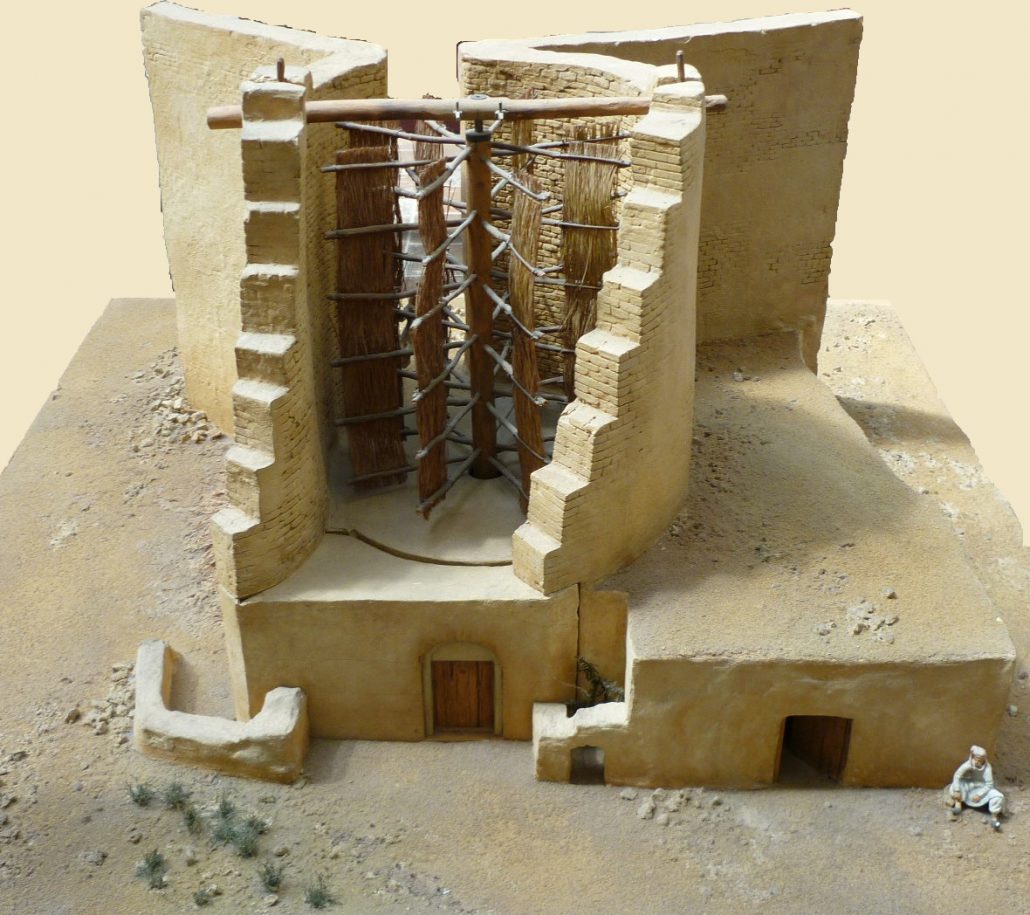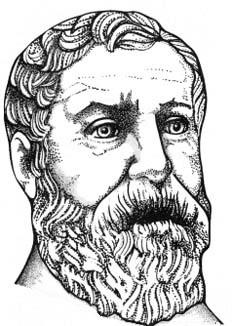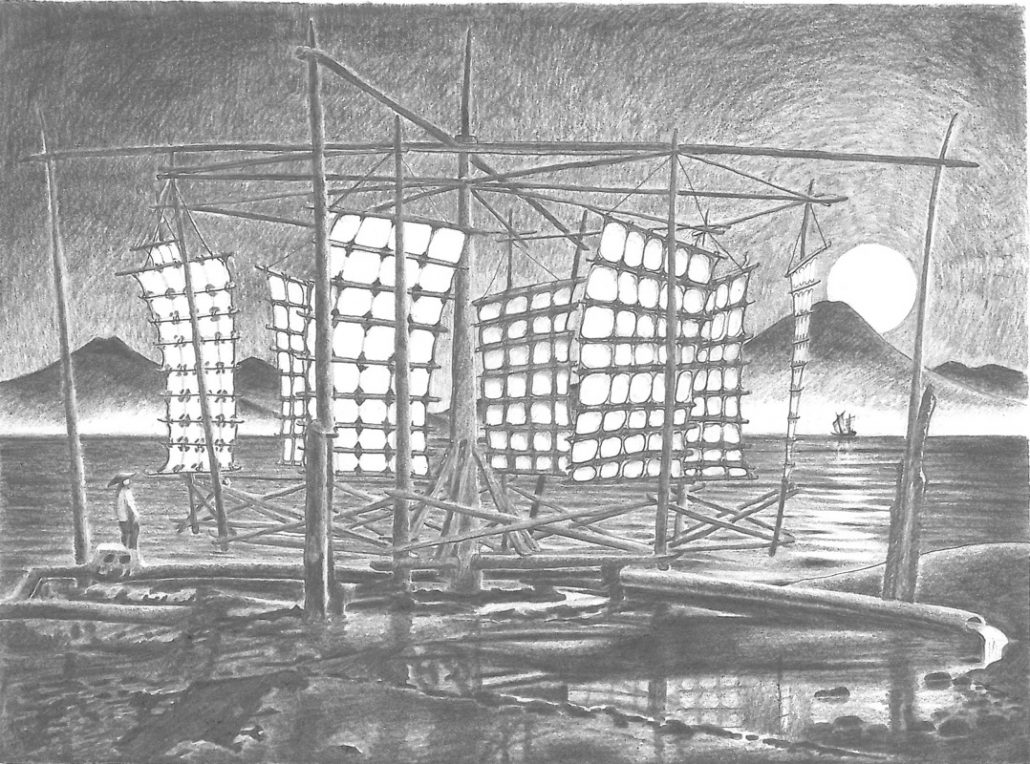The article below is based on an excerpt from Kaveh Farrokh’s second text “Shadows in the Desert: Ancient Persia at War” (2007, Chapter 19: The Legacy of Persia after the Islamic Conquests, pages 280-281). The book published years ago in 2007, continues to evoke interest in readers, as seen recently in Shepherd: Discover the Best Books venue.

For more on these topics, readers may consult the following link: Learning, Science, Knowledge, technology and Medicine
=========================================================================
The first water pumps and grain mills powered by wind-sails originated in modern northwest Iran in (circa) 6th -7th centuries CE during the late Sassanian era.

Model of an Iranian windmill housed in the German Museum in Munich (Source: Saupreiß in Allaboutlean.com).
The origins of the first wind-powered machine concept is attributed to Heron (10-70 CE), a Greek inventor who first built this device in his workshop in Roman-ruled Egypt. Heron’s design of the shaft and rotating blades were placed at the horizontal position.

Portrait of Heron as he appears in a 1688 German book translation of Heron’s “Pneumatics” (Source: Public Domain).
The Heron machine however never advanced beyond the prototype he had designed, as the Romans never exploited this for generating power or for agriculture. The Iranians however knew of this technology, thanks in part to the Sassanian Empire’s efforts to protect and preserve Greek scholarship and knowledge (see Jundishapur University)
Short video of an ancient windmill in Iran that remains operational to this day (Source: Youtube).
By the late Sassanian era the first true windmill had appeared in the northeastern regions of the Sassanian Empire (modern Khorasan and west Afghanistan). Modern scholarship is in agreement that Iranian engineers had completely re-designed Heron’s original machine for applied purposes. They had achieved this by inverting the shaft that held the blades, toward an upright position. The re-designed shaft and rotating blades were installed inside a mud-brick encased tower. This structure in turn had “air ducts” allowing for the air to enter and rotate the blades housed inside of it. The “sails” or “blades” were built of a very strong fabric – there were up to twelve of these inside each of these “towers” or structures. This new technology had been initially designed as a corn-mill.

Drawing of a Chinese windmill based on technology imported from Persia (Source: Carl von Canstein in GNU.org).
The Arabian conquests of the Sassanian Empire soon led the Caliphates to adopt the new windmill technology from the Iranians. By the 9th century CE, this technology had spread throughout the Caliphate’s realms and also eastwards into India, reaching China by the 13th century CE.

The Bidston windmill in Great Britain (Source: Fractal Angel in Geograph.org).
The Iranian windmill design appears to have reached Arab-ruled Spain as well, and later the British Isles by 1137 CE. It was the British (not the Dutch as is conventionally assumed), who effected significant changes to the original Iranian design. The British genius was in their combination of both the Greek (Heron) and Iranian (late Sassanian) technologies. The British post-mill had two axes of rotation:
(1) A vertical shaft for horizontal rotation allowing for the entire structure to be now rotated for harnessing the wind
(2) A horizontal shaft for vertical rotation of the sails (based on Heron’s original concept)

A Dutch windmill overlooking tulips (Source: win4000.com).
The British adaptation of the Iranian windmill soon spread across continental Europe all the way to Greece and the Aegean Sea. Europeans made other designs such as the smock mill and tower mill. The famous modern-day Dutch windmill can trace its ancestry to English, Iranian and Greek origins.




